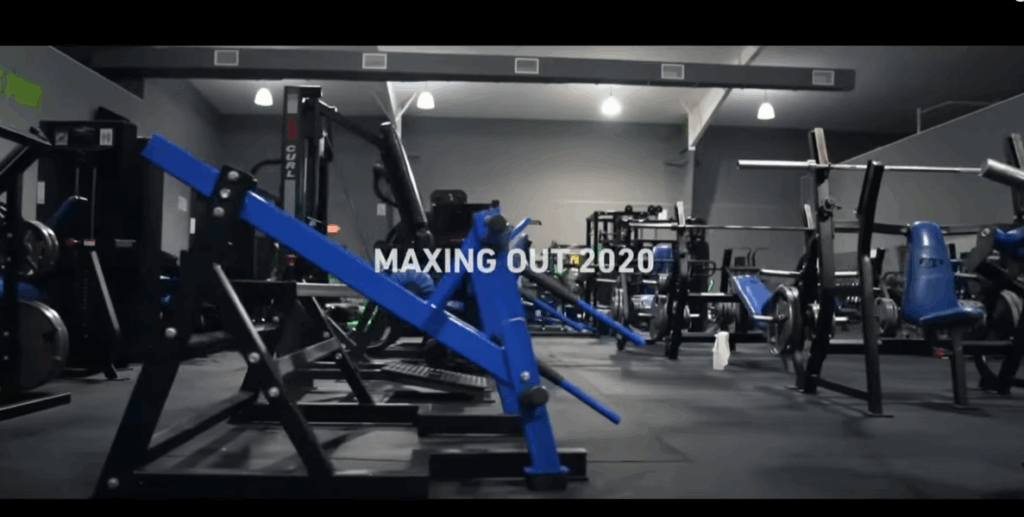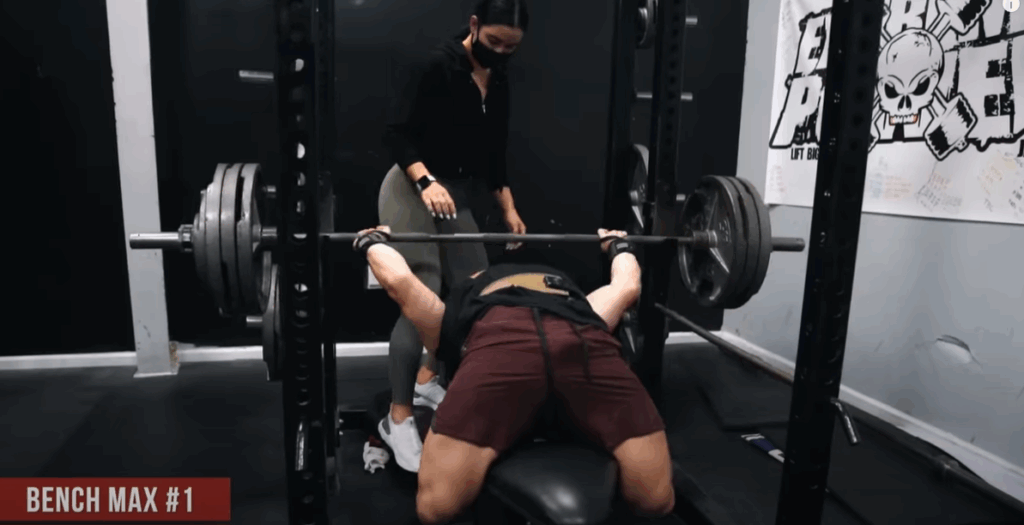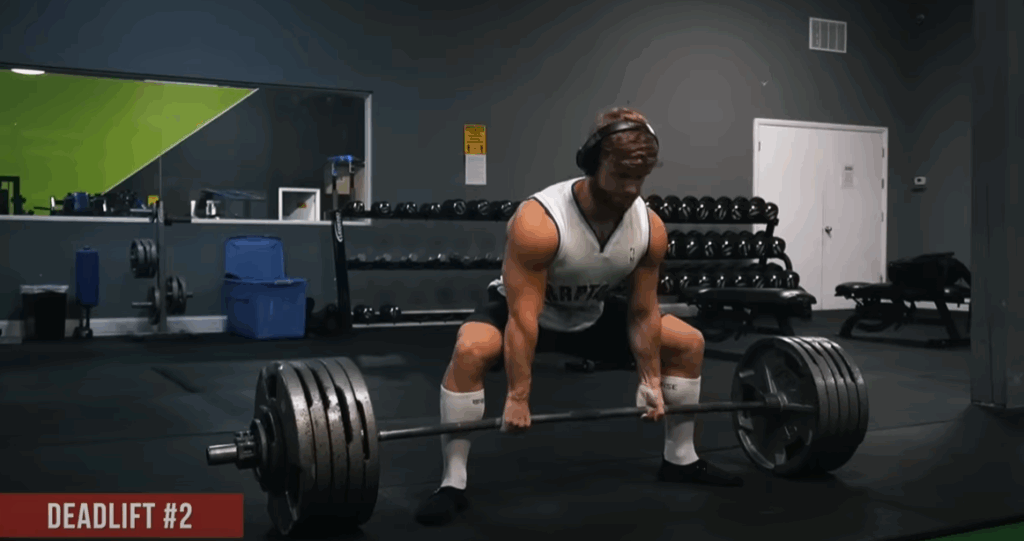How I Tested My Maxes on Squat, Bench, and Deadlift — And What I Learned
After months of hard training, I recently wrapped up a full 10-week powerbuilding cycle with a dedicated week to test my one-rep maxes on the big three lifts: squat, bench press, and deadlift. This wasn’t just about chasing numbers — it was about testing my progress under structured training, analyzing technique, and applying what I learned into my next training block.
Let’s walk through each lift, the mindset behind my attempts, what went well, and what I’ll be tweaking next time.

Bench Press Max Testing
The bench press was the first lift I tackled during max testing week. I warmed up and went straight for a top attempt at 370 pounds. Coming off a strong training phase, I felt confident, and the bar speed confirmed that I was in good shape. That lift moved well overall, but I identified two technical points I want to refine moving forward.
First, I noticed some minor hip lift off the bench — not ideal, especially for powerlifting standards where glute contact is mandatory. Adjusting my foot position slightly forward should help with that. Second, I want a more controlled pause on the chest, as I tend to sink the bar a bit too deeply, which can throw off the press.
Feeling strong, I attempted 385 pounds next — a 15-pound jump. I figured elbow sleeves would give me a small edge, but it turned out to be too big of a jump. I failed the rep, and in hindsight, the gear change may have disrupted my groove. Lesson learned: progress isn’t always linear, and small technical shifts can make a big difference.
Still, I was happy with the 370-pound lift — it’s the best bench I’ve hit in training, and it gives me a solid benchmark going into the next phase.

Deadlift Max Testing
The next day, it was time to pull heavy. I ended up hitting 520 pounds — a weight I hadn’t lifted in over five years. This was especially rewarding considering my old competition best was 517 pounds.
While some might say the bar moved quickly and I had more in the tank, I stopped there intentionally. I’ve learned that grinding out one more rep just for ego isn’t worth the risk, especially when your back and grip start to give signs of nearing max effort. I didn’t use straps either, which makes this lift even more satisfying for me personally.
My deadlift has historically been limited by stability at lockout. I’ve been working on this by programming low block pulls every other week, which have helped with grip strength and hip positioning. This cycle, my lockout felt rock solid, and I didn’t feel that usual wobble — a huge win.
Squat Max Testing
For the squat, I kicked off with 455 pounds — a weight I now consider my baseline. It moved well, so I went ahead and added another 10 pounds for a 465-pound lift. That felt surprisingly smooth, so I pushed to 475 pounds — a weight I hadn’t attempted in years — and nailed it.
My recent focus on technique really paid off. Specifically, I’ve been learning to trust my back in the low bar squat. I used to stay overly upright because of previous back issues, but that would throw off balance and bar path. Allowing a bit more forward lean while staying tight has made my squat far more efficient.
The only thing I wasn’t happy with was the walkout. It felt less stable than I’d like. To fix this, I’ve been doing occasional heavy walkouts with weights above my training max, just to get my body used to unracking and stabilizing heavy loads. I’ve now added these walkout drills as a staple in my future programming.
Key Takeaways from Testing Week
This testing phase taught me several valuable lessons that can benefit any lifter combining strength and hypertrophy goals. Here’s what I’d emphasize if you’re chasing both size and strength:
1. Submaximal Work Builds Technique
One of the biggest improvements I’ve seen comes from consistent technique work. Performing submaximal sets that stay away from failure allows you to fine-tune mechanics without breaking down under fatigue. Even one lighter session per week focused purely on technical consistency can do wonders for your long-term strength ceiling.
2. Heavy Top Sets Drive Progress
Every second week of the program, I’d hit one top set — usually in the 2–8 rep range — at a weight near my previous bests. The goal wasn’t to hit failure, but to push close to a new rep PR around an RPE of 8 or 9. Then, when I cycle back through the program, I try to beat that previous performance. This method has led to steady size and strength gains while keeping recovery manageable.

3. Plan for Technical Limits, Not Just Numbers
Failing a lift doesn’t always mean you’re weaker. In my 385 bench attempt, it was a small form error — not strength — that cost me the rep. That’s why structured, progressive training matters more than chasing a number blindly. Getting stronger means refining technique just as much as adding weight.
4. Don’t Be Afraid to Leave Reps in the Tank
I stopped the deadlift test at 520 even though I might’ve had more. Why? Because the smart play is thinking long-term. Avoiding burnout or injury lets you come back stronger next week — not sidelined for a month.
5. Use Tools Wisely
Heavy walkouts, low block pulls, paused bench presses — these aren’t just advanced “tricks.” They’re essential tools that help address specific sticking points. When used purposefully, they can help break through plateaus without adding unnecessary stress to your program.
What’s Next?
Now that I’ve wrapped up testing, I’m going into a small surplus phase and preparing to run through the same 10-week powerbuilding program again — this time aiming to beat the rep and weight targets I set this cycle.
If you’re someone who’s been training for a while and is looking to make gains in both size and strength, I’d recommend following a similar approach. A mix of heavy low-rep work, moderate accessory volume, technical refinement, and strategic overload really is the formula that works — not just for me, but for dozens of clients I’ve coached over the years.
Final Thoughts
Testing your maxes can be a great way to assess your progress, but only if it’s done smartly. It should be a learning experience, not a beatdown. Reflect on what went well, identify weak links, and use that information to shape your next block of training.
Whether your goal is to add muscle, break lifting plateaus, or build a stronger, more resilient physique — remember that progress isn’t always about going heavier. Sometimes, it’s about getting better.
And if you’re interested in a detailed, science-backed powerbuilding program with full tracking sheets, technique guides, and video demonstrations, I’ve made that available on my website. Until then, keep training smart — and get after it.



